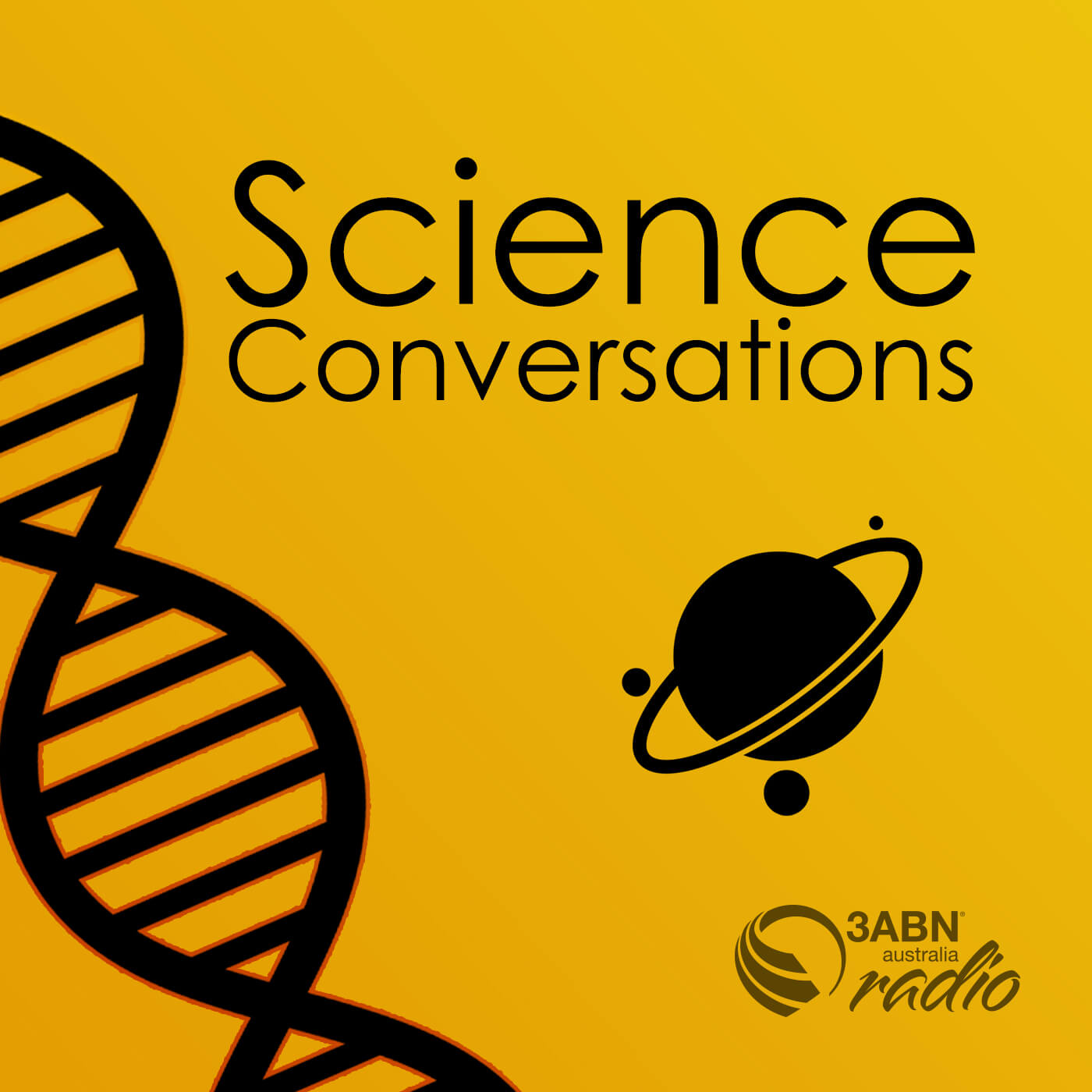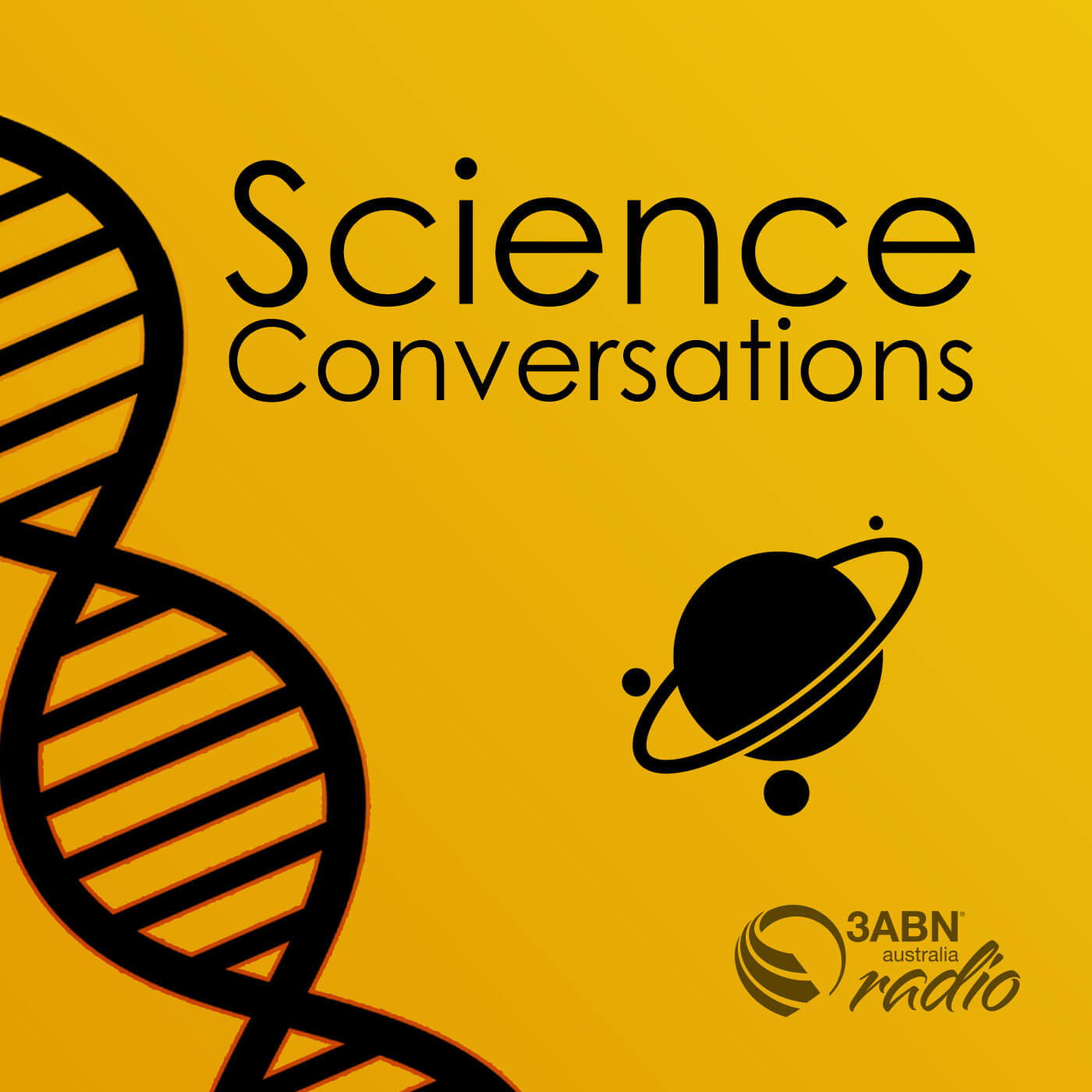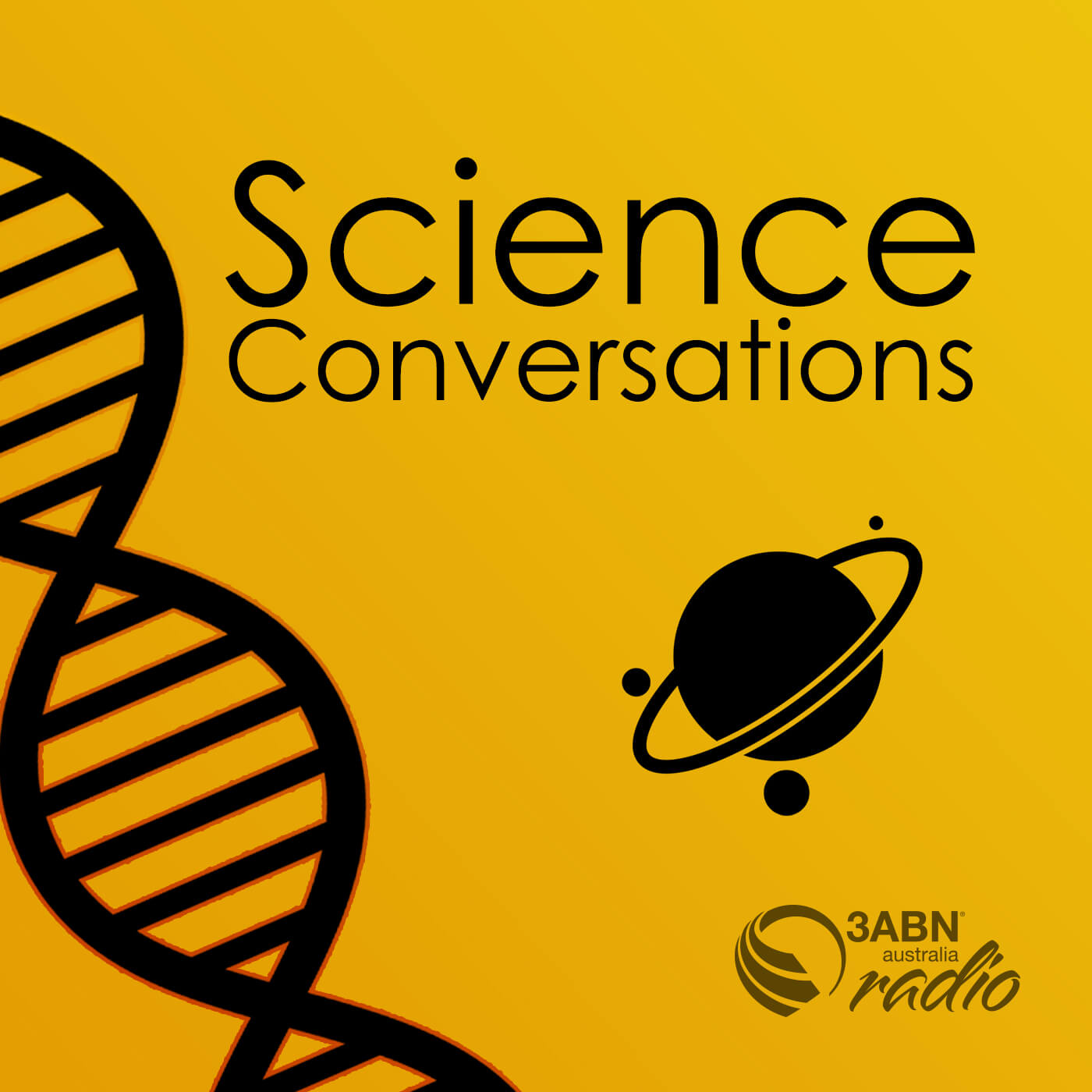Episode Transcript
SPEAKER 1
Welcome to Science Conversations. I am Kaysie Vokurka. Is there any evidence of fossil intermediates? Joining me to discuss part three of this topic is Dr. John Ashton. Welcome once again Dr. John. Hello Kaysie. Dr. John has written a book which we've been discussing called Evolution Impossible: 12 Reasons why Evolution Cannot Explain the Origin of Life on Earth. And we've been looking at chapter six in the last few parts. So to start off today our question is is there evidence for evolution between fossilized species and their surviving counterparts today?
SPEAKER 2
Right, now that's a very relevant question actually. And I think it's quite fascinating and certainly been an eye-opener for me that there are many fossils that we find in the fossil record that are purportedly hundreds of millions of years old even that are the same as species alive today. And I remember some time ago reading about the discovery of the coelacanth fish in the Indian Ocean back in 1938. Some fishermen there pulled up this fish and they saw it was very different. So they kept it separate and showed the authorities and it was later identified as the same as a fish that was last seen in the fossil record hundreds of millions of years ago. Now of course since that time they've caught more coelacanths. they're not all that common. But this was an outstanding example that showed that preservation. Of course, as more research has been done over the years and more fossils examined and discovered and so forth, there's many, many more examples now. The fascinating thing is, what this shows is that these species have bred and they've bred and they've bred and they've bred and in the case of the colacanth, supposedly for millions of years, but they never changed. But of course this fits exactly the biblical creation account. Yes. And the fossils were formed by a global, supernatural, catastrophic flood buried these animals. But yes, we don't see any change. So we don't see evidence for evolution occurring in these species. They've just continued on the same. They haven't evolved and changed. We don't, again, see intermediates, as we've already talked about, of these species or some of these species slowly changing into something else. So you can imagine, okay, you had the pure strain continues on, maybe if evolution occurs, there should be some variants developing as well. You know, a fork in the tree, so to speak. We don't find that evidence either. There are no examples of that either.
SPEAKER 1
That's so interesting. Now, there was a huge project that was done by Dr. Carl Werner, I think you say. And tell us a bit more about that project, because that has a lot of relevance to this topic of the change that we would expect to see, but we actually don't between the fossil record and today.
SPEAKER 2
Yeah, so again, this was a person training in biology and medicine that decided to take upon himself to actually look at the evidence for the claim that the fossils show this evolutionary pattern. And so what he decided to do was to show, hang on, from the fossils, we either find animals that are extinct or we find animals that are the same today. In other words, what he was looking to show is, okay, if they're extinct, they're extinct, they're gone, right? But if they're still alive today, and we find them in the fossil record hundreds of millions of years ago as well, and they're not showing any signs of evolution, there's no splitting, you know, of the branch in the tree sort of thing, what's the evidence for this? And so he set about to document to show that in actual fact the fossil record doesn't show evolution. We don't see these changes occurring. So what he essentially did was he went to museums around the world and photographed fossils of species that are alive today and photographed the fossils, the ancient fossils of that species, so that again you could compare the photograph of the fossil with the photograph of the contemporary species. current species today. And so you could actually do that anatomical comparison of the two to demonstrate that there wasn't a change. And he combined that as a couple of books. I forget what they're called now, but he published those. Actually, yes, I've got it written down here. Evolution the Grand Experiment. Yes. So this was what, he put them out as two volumes with colored photographs. So powerful evidence that there wasn't evidence for evolution.
SPEAKER 1
Interesting.
SPEAKER 2
Yeah, it's quite fascinating.
SPEAKER 1
I guess with the fossil record, I think a lot of the emphasis has been on species that are extinct or things like the dinosaurs and that kind of thing. That's, for someone who's just in the general public, that's what you're exposed to a lot. There's not, doesn't seem to be a lot of discussion on the fact that it's full of stuff that is alive today and it's just the same.
SPEAKER 2
Yes, exactly, yes. And it's interesting that you mentioned dinosaurs because they did a special section in their work where they looked at and photographed the fossils that are found in the dinosaur layers with the dinosaurs.
SPEAKER 1
Oh, okay.
SPEAKER 2
And so these are species that are alive today. So they haven't changed. They coexisted with the dinosaurs, which became extinct around 65 million years ago and earlier, of course. And so these are species that were alive then, living, running around with the dinosaurs that are still alive today. And I'll just read them out because I think it's really fascinating and I can't remember them all off by heart, but their examples include photographs of fossils and museum displays of creatures and plants found in the same strata as the dinosaurs. and are presented alongside photographs of their current living counterparts and include brittle stars, sea urchins, sea biscuits, starfish, sea cucumbers, crinoids, feather stars, shrimp, lobsters, crayfish, crabs, horseshoe crabs, termite nests, dragonflies, katydid, water skaters, water bugs, wood wasps, beetles, scorpion flies, mayflies, crickets, cockroaches, scollops, clams, mussels, cockcomb, oysters, snails, nautiloids, elephant tusk shells, lamp shells, sea cradles, earthworms, tube worms, sponges, corals, sturgeon fish, colicants, lungfish, garfish, bowfish, eels, herring, orange ruffie, you can buy those in fish shops. Angel sharks, rays, hagfish, salamanders, alligators, crocodiles, boa constrictor snakes, lizards, turtles, a modern type of bird, and they found fossils with Tyrannosaurus Rex, actually various mammals, sequoia seed cones, Cook Pine seed cones, Redwood branches, cycads, Maiden Hair Tree, or Ginkgo, ferns, horsetails, mosses, rhododendrons, lilies, sassafras, poplars and other trees and plants, all in the same fossils as the dinosaurs. And these plants, fossils and animals are alive today and the same as the ones that they found with the dinosaurs. They haven't changed. And it's interesting what I wrote a little bit further was the examples that Carl and Debbie Werner have collected are not exhaustive, but rather serve to show that there are many examples of animals and plants that we know lived at the same time as the dinosaurs existed. where the surviving species look the same as the fossils. That is, they show no evolution. Dr. Werner also reports that between 100 million and 200 million fossils have been collected and are in museum. That's a lot of fossils.
SPEAKER 1
That's a lot of fossils.
SPEAKER 2
And during the course of his research and filming of the program Evolution: the Great Experiment video series, he has met with and interviewed many museum curators and discussed the fossil evidence, much of which is not on display, but in museum storerooms. For example, many listeners may not be aware of the large number of mammal species found with dinosaurs. Paleontologists have found more than 430 mammal species in the fossil dinosaur layers, which show that these animals coexisted with the dinosaurs. However, Dr. Werner reports that he did not see a single complete mammal skeleton from the dinosaur on display in any of the 60 museums that he visited. So that's interesting, is it, when they draw the setting for the dinosaurs, they don't have a few mammals running around with them.
SPEAKER 1
Yes.
SPEAKER 2
That's correct. So painting this sort of trying to paint this evolutionary picture.
SPEAKER 1
Now in terms of the evolution of that, like you mentioned, I think in the last program, that birds that were apparently evolved from flying dinosaurs. So some of these creatures which we see today in evolutionary theory, what they meant to evolve from dinosaurs eventually? Or are they, it's not quite clear.
SPEAKER 2
Well, of course, the classic example you say the birds were supposed to have evolved. But again, obviously we find them in the dinosaur layers. But the fascinating thing is we find them in the dinosaur layers, we find fossils of birds, we find fossils of dinosaurs, we don't find fossils of dinosaurs changing into birds. Birds, yes. So this is, and we should find, you can see we've got hundreds of millions of fossils that have been collected. identified, sorted in museums, in their storerooms and so forth, and we don't find these in the fossil layers. And yet there should be a massive number for that change to occur in that particular time. You would think that the changes would have to be pretty rapid and so forth because the turnover of bird species, gestation time and so forth, you've got to accumulate a lot of mutations to produce the huge changes between a dinosaur and a bird that we've we've already talked about.
SPEAKER 1
Yeah, for sure.
SPEAKER 2
So this is quite fascinating. You know, primacy of evidence really, these photographs that he put out in the books and the television series are primacy of evidence that evolution hasn't occurred. The crocodiles that we find in the record, in the historic record, are the same as the ones we find today. They haven't evolved. And the other important point is it's not as if, okay, these creatures have remained the same, but we have evidence of another branch forming from these creatures. We don't find those other branches forming. there's no fossils of these other creatures, all these creatures that we find of all different types, different types of phyla, we don't see the evidence. Okay, some continue on the same, but we find fossils of them gradually evolving into something else. We don't find those. They're all missing. And this is a very, very important scenario. And it's not surprising, really, because when we look at the complexity of the mutation and the size of the mutations and the number of mutations that would have to occur to produce a new type of functioning body part is huge. And, you know, some of the biologists and paleontologists have actually pointed out, well, what's good is 0.2% of a wing, you know? Or 0.2% of a feather, you know? That's true. Part of the mechanism. It's going to be a hindrance. It's going to be sort of wiped out. Yeah. Natural selection's going to eliminate those sort of mutations. But the fascinating thing is that we see that over millions of years, and we're talking about small organisms, this sort of thing that reproduce fairly through to large organisms like crocodiles and so forth that reproduce more slowly, over this particular time they actually haven't changed. In other words, the genetic integrity has been preserved. And the reason for that is that we understand the biological mechanisms that there are mechanisms in the biological systems to preserve the DNA code, to prevent cross-breeding hybrids and that that aren't viable, all this sort of thing occurring and to preserve of the integrity of the genetic code. And these fossils that we find that are hundreds of millions of years old are prima facie evidence that that has occurred. Those mechanisms were already in place and continued on. They were already in place right from the oldest fossils that we find that have continued on the same.
SPEAKER 1
Yeah, and that's such a contrast because it's highlighting that if you have intermediate species, they're probably not gonna survive and that's why there's a protective mechanism to prevent that from happening. It's totally not what you would expect.
SPEAKER 2
If you were going to look at the title. I just thought I would conclude the chapter with this little paragraph. This knowledge of the major shortcomings of the so-called evidence for evolution is not being taught to biology students nor made widely known to the general public. In fact, the standard reference textbooks for biology and evolution continue to omit any in-depth discussion of these major objections to the theory. and Harvard University Professor Stephen Jay Gould also points out that the evolutionary trees that adorn our textbooks are based mainly on inference and not on evidence of fossils.
SPEAKER 1
That's quite something to take in, isn't it? It's not what it's made out to be. When you drill down into the detail, they give you an overall picture and you're expected to just roll with that. But when you take it in-depth look, as we have done just in a very short time at some of the critical evidence that we need, it's not there, is it?
SPEAKER 2
It's not there.
SPEAKER 1
It's just not there. Wow. Thank you for taking us through that topic. And next time we'll examine the question, is there any geological evidence of a catastrophic global flood? Be sure to join us for that.


